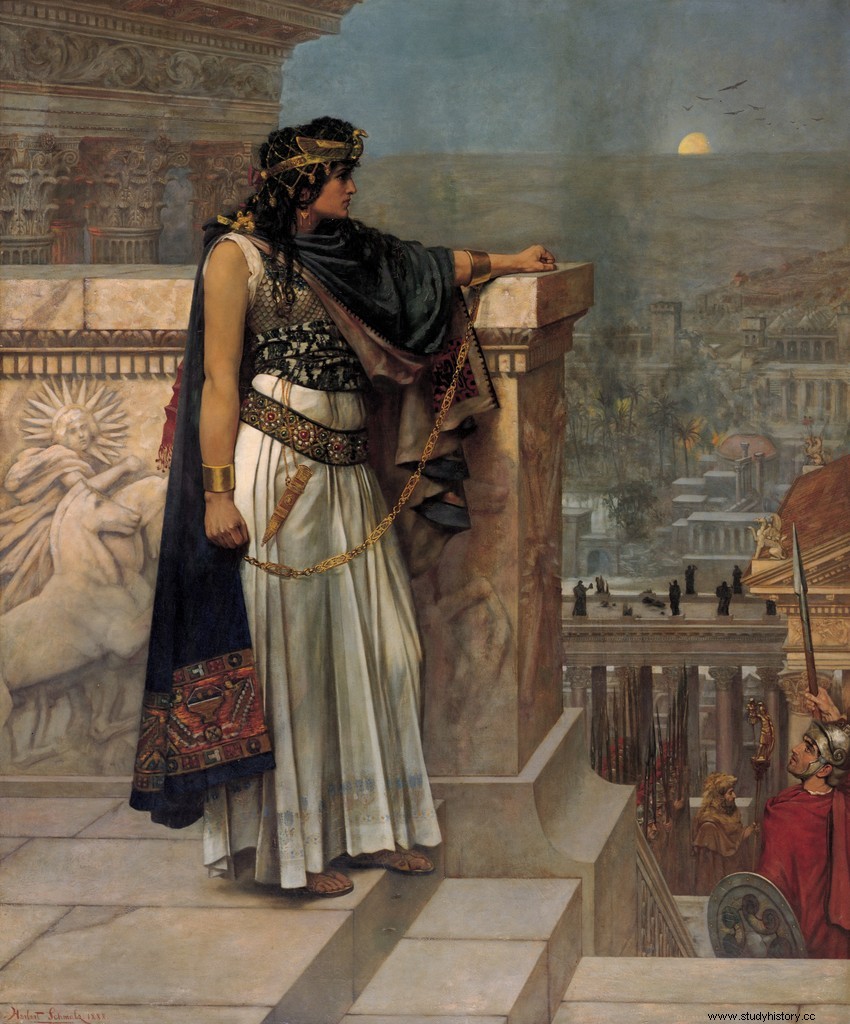Mavia, also sometimes called Mawia, Mawai, Mawaiy or even Mania, is an Arab warrior queen, who reigned in southern Syria during the second half of the fourth century. Leading her troops in a revolt against the Roman Empire, she won many victories against them.
A revolt often compared to that of Zenobia

The actions of Mavia have come down to us mainly through the writings of contemporary or almost contemporary authors, such as Rufinus of Aquileia. These accounts relate nothing of his childhood or his youth. A descendant of Arab tribes from Iran, she married al-Hawari, the last king of a confederation of semi-nomadic Tanukhid tribes in southern Syria. In 375, her husband died without an heir and Mavia took control of the confederacy. Quickly, for perhaps religious reasons, she began to forge alliances within the Arab world in order to prepare an uprising against the Roman Empire.
In 378, Mavia launched a massive revolt against Rome, often compared to that of Zenobia a century earlier. Leading her men personally into battle, she repeatedly defeated the Roman armies, in Arabia, Palestine and as far as the borders of Egypt. Highly mobile, his troops use guerrilla tactics, conducting raids and preventing the enemy from having a target to retaliate. On the battlefield, they use the Roman strategies with which they have become familiar. A fine tactician, Mavia submits the Roman governor of Palestine, wins many supports in the region and advances inexorably.
A negotiated peace after many victories
Defeated many times, the Roman Emperor Valens, already at war with the Goths, seeks to negotiate peace. Contemporaries report that, during her revolt, Mavia converted to Christianity following her encounter with an ascetic monk. In exchange for peace, she demands that this monk become the bishop of her people, which is granted to her. Socrates the Scholastic, a historian of Christian antiquity, also reports that, to seal peace, she married her daughter Chasidat to the commander-in-chief of the Roman armies. The terms of the truce also involved sending Tanukhid troops to support the Romans in their fight against the Goths, which Mavia did. In uncharted territory, however, his armies prove less effective and the Goths drive the Romans back to Constantinople, killing Emperor Valens in battle. The alliance does not last long:the new emperor, Theodosius I st , favors the Goths to the detriment of the Arabs and they feel betrayed. A new revolt, in 383, was quickly crushed. Accounts from the time do not mention whether or not this second insurrection was led by Mavia.
Mavia died in 425 in the village of Anasartha (now Khanasir, Syria), where an inscription mentions her death.
